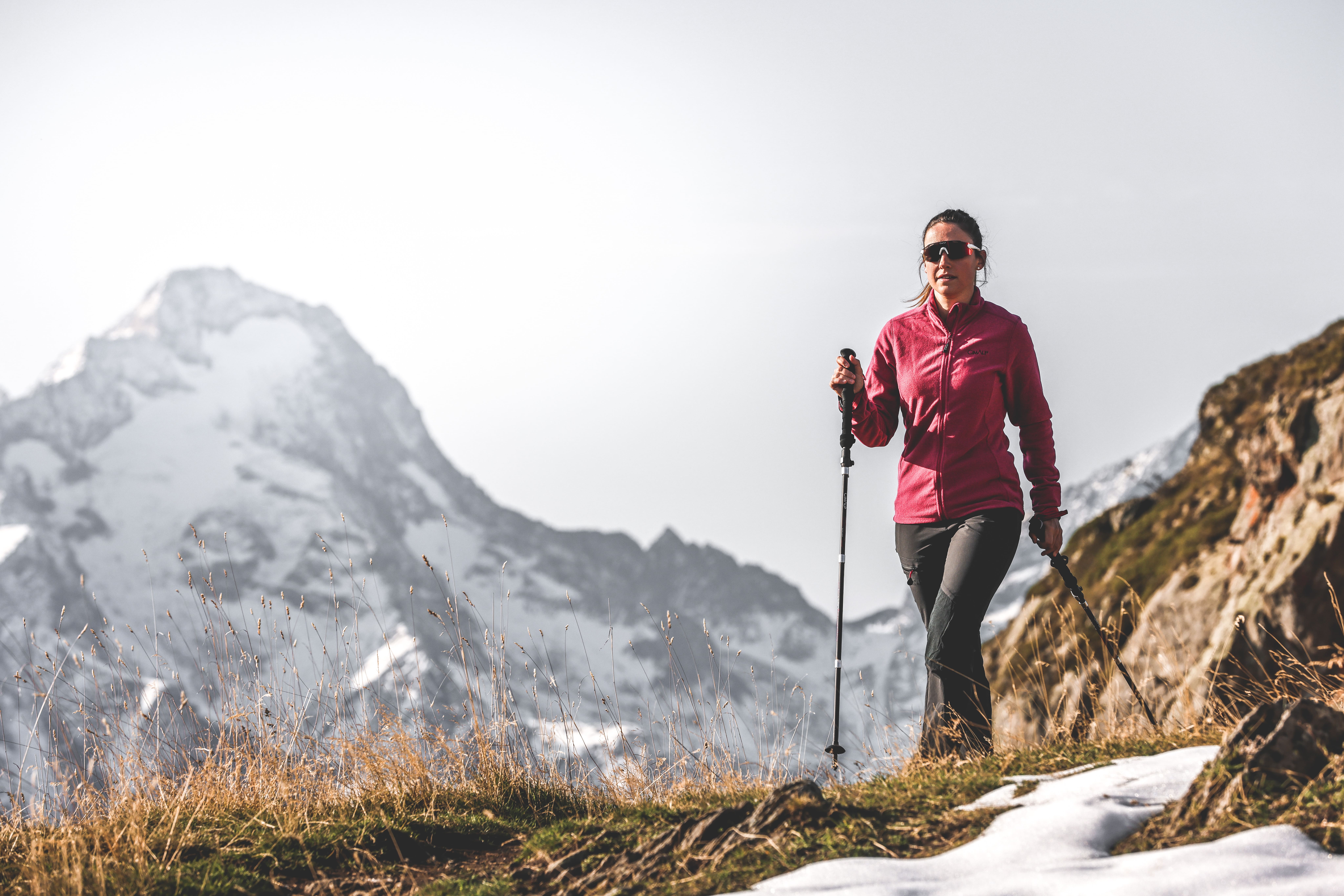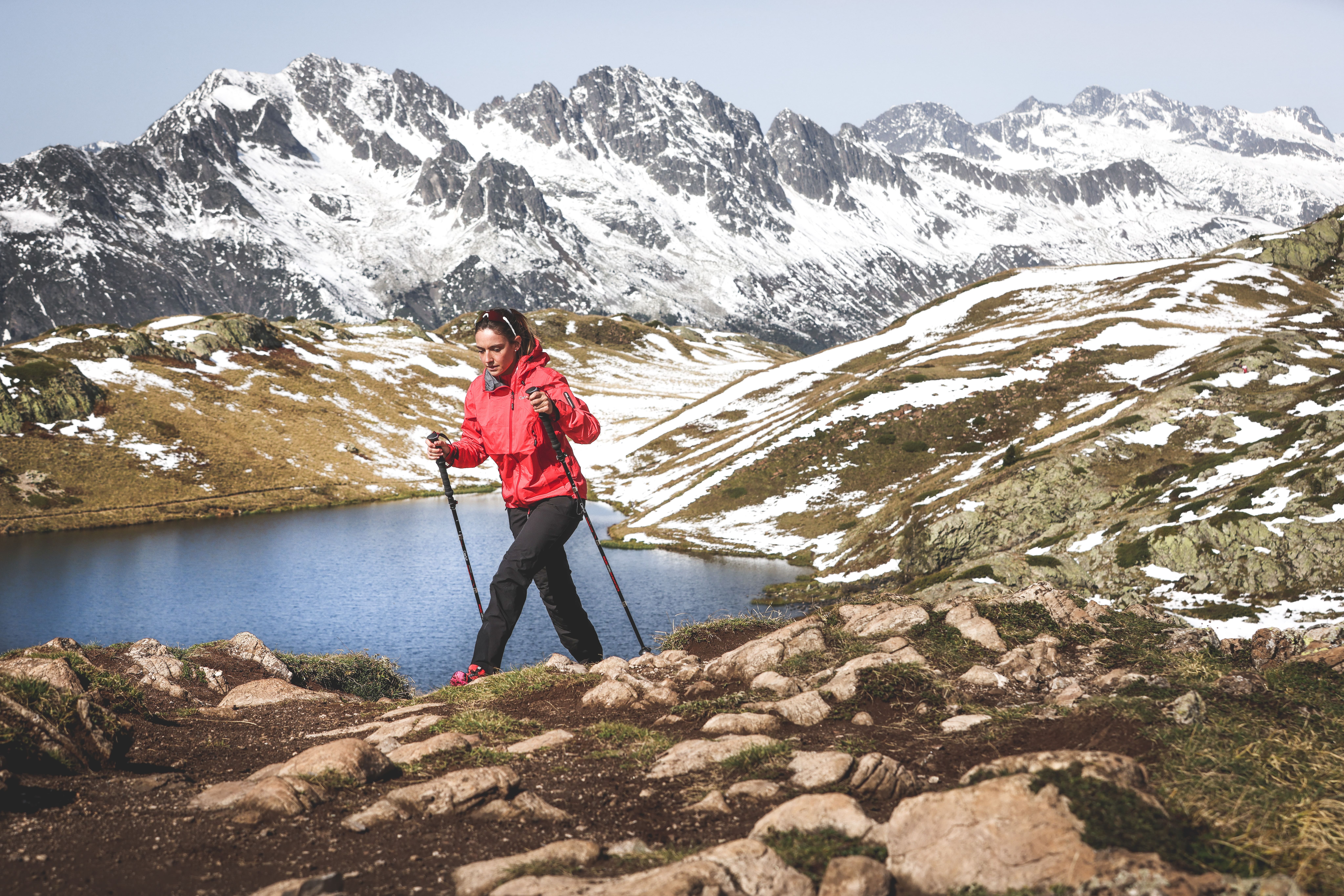How to choose your hiking poles?
In this post, we give you all the advice you need to choose your hiking poles, so that you can get the most out of your mountain outings.

To get the most out of your alpine or mountain outings, hiking poles are highly recommended. They provide the hiker with more balance and stability, and therefore safety, and allow him to adopt a better posture, to tire less quickly, to be more enduring and therefore more efficient. But all this is only possible if the poles chosen are suitable for the hike and the hiker who will use them.
What materials should you choose for your poles? Which handle to choose? How to choose the clamping or storage system? In the following paragraphs we will try to guide you in the choice of your future hiking poles.
The poles of hiking poles
Unlike Nordic walking, it is better to use adjustable multi-strand poles for hiking. While Nordic walking is usually practised on flat terrain with little steepness, when hiking, the relief and types of terrain can change during the same outing. Therefore, you will not need your poles all the time and you will have to adjust their height regularly. There are two main storage systems for trekking poles, which are divided into two categories.
Telescopic poles: these are usually made up of two or three poles that slide together. When folded, the poles are completely interlocked, to extend the poles, they are simply slid to the desired size and then screwed or clipped together. In fact, they are always adjustable but the clamping system can be of two kinds:
Screw-in telescopic poles: the hiker has to screw the poles together when the desired length is reached, to fold them back he just has to unscrew them. This is the oldest, most common and most economical system. However, it can happen that the length suddenly becomes unbalanced during use, which is very surprising and even dangerous. If the hiker screws the poles too tightly to avoid this, they can be very difficult to unscrew, which is also a problem. In conclusion, the screw clamp system is best suited for occasional Sunday hikers on easy terrain or on walks.
Telescopic poles with clips: The hiker slides the poles together and clips them to the desired length. This ensures an efficient, fast and safe clamping. This is a more modern, more reliable system, which is preferred to its predecessor without hesitation. It is therefore slightly more expensive, but highly recommended for hikers who want a telescopic storage system, who practice regularly and who have heavy support on their poles.
Foldable poles or breakable poles: usually made up of a minimum of three poles, they do not slide together, but are detached from each other so that they can be stored in a Z-fold system and then interlocked when deployed. They are connected by a reinforced cord that holds them together when they are detached. This is a much faster system than telescopic poles. In addition, breakaway poles are also easier to fold and unfold. They are therefore easier to handle, often lighter, stronger and less bulky when folded (especially if they have more than three poles). Note that there are two types, and the difference is crucial.
Non-adjustable folding poles: There are folding poles which are not adjustable in size, which are mainly suitable for hiking on flat and easy terrain without big differences in height. We don't mind telling you that it is a bit of a shame to invest in such poles for this type of hiking.
Adjustable folding poles: They have all the advantages of retractable poles without the disadvantages. They are strong, light, compact, manageable and easy to use.

The composition of the shaft
For trekking poles, the choice of alloy is mainly between two materials: carbon and aluminium. Both options are excellent, let's have a quick look at the characteristics that differentiate them.
Aluminium trekking poles: this is the most common and economical choice. They are strong, durable, light and versatile as they are also great for skiing and snowshoeing.
Carbon trekking poles: made from a combination of glass fibre and carbon in varying percentages, they are ultra-light and have the advantage that aluminium poles do not: they absorb vibrations, thus protecting the joints. They are, however, somewhat more fragile and more expensive.
Straps
When hiking, simple wrist straps are sufficient as the hiker does not have to let go of the poles, as in Nordic walking for example. There are standard straps, made from a simple adjustable strap, and padded straps for greater comfort. More ergonomic, they are preferable for long hikes as they limit the risk of irritation or even blisters.
Handles
For hiking poles, you can choose between four types of handles:
Plastic handles: these have the advantage of being economical. Plastic is sweaty, so you won't have a good grip and it is a stiff material that lacks comfort. However, they are light and can be used for short and occasional rides.
Rubber grips: slightly more comfortable than plastic grips, they are suitable for longer rides. Beware, though, that while the purchase price is low, they are not durable and will quickly become damaged if exposed to sunlight or low temperatures.
Foam handles: ultra-light, comfortable, absorb perspiration well but tend to degrade over time.
Cork handles: a little heavier than foam handles, they remain light, are more durable (noble material) and offer a good perspiration evacuation system, which prevents humidity. They also have the advantage of absorbing vibrations.
The tips
As the link between your poles and the ground, the choice of spikes is very important but also relatively easy. You will probably only have a choice between classic steel tips and tungsten carbide tips. The former are less resistant than the latter and will tend to be damaged much more quickly. This is why we advise you to choose tungsten tips whenever possible. They are more durable and offer a better grip on the ground for longer than their steel cousins, which more than justifies their higher price.
Tips and washers
It is always possible to carry and add a removable tip to your spikes depending on the terrain you practice on. On asphalt, for example, they reduce the noise and impact between the tip and the asphalt, protecting the tip at the same time. The washers are also interchangeable, so if you decide to practice on snowy ground, it will be necessary to replace your "summer washers" with larger ones, called "winter washers".
